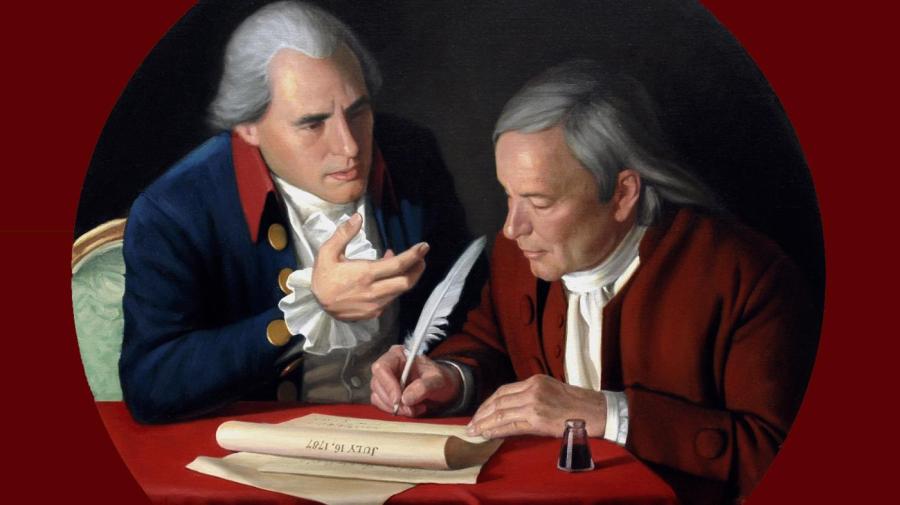Determining Fair Representation: The Great Compromise

The Great Compromise of 1787, or the Connecticut Compromise, was the result of a debate among state delegates regarding the amount of representation each state should have in Congress.
Historical Context
The 1780s was a decade full of momentous decisions in the formation of the United States as a nation. In 1781, the states were busy instituting a governmental structure through the signing of the Articles of Confederation. These articles unfortunately neglected several important matters, including tax levies, trade and slave regulation, and the draft. In addition, there was much financial instability at the time, both at an individual and state level. As a result, in 1787, a group of 55 delegates from 12 states met in Philadelphia, Pennsylvania, for the Grand Convention to discuss what improvements could be made to the Articles.
One of the issues discussed was that of representation. Although it was agreed that all states should be represented, delegates differed regarding the amount of representation each state should have.
The Opposing Sides
Most delegates from the more populated states favored the Virginia Plan, created by Edmund Randolph and James Madison. It called for the division of the government into three branches (legislative, executive and judicial), which would serve a two-housed system. Randolph and Madison felt that the citizens should elect the Lower House, who would in turn elect the Upper House. Significantly, this plan determined the extent of state representation by the population of the states. Larger states asserted that, due to their greater financial and defensive contributions to the nation, they should also receive greater governmental representation.
Less populated states, on the other hand, were concerned that this system would result in their votes being easily overridden and so nullified by the larger states. They therefore preferred William Patterson’s proposition, known as the New Jersey Plan. It was based on the original Articles of Confederation system, advocating a one-house legislature with a powerful Congress. Each state would receive equal representation, regardless of population. Congressional representatives would be elected by popular vote, though he recommended lifetime Supreme Court appointments chosen by the executive branch.
The contention over this issue nearly derailed the Grand Convention. The likely result would have been that the United States Constitution as we know it would not exist.
The Compromise
A compromise was reached when Roger Sherman, a delegate from Connecticut, proposed a plan that attempted to address the needs of both sides. He suggested a two-chamber Congress approach: the upper chamber, or Senate, and the lower chamber, or House of Representatives. Though each state would receive only two senators regardless of population, they would be represented in the House of Representatives by one member per 300,000 citizens.
Though Benjamin Franklin was notably against the Great Compromise, it passed by one vote on July 16, 1787.
The Aftermath
The Great Compromise resolved a major contention and helped to move along the development of the Constitution, and other issues soon came to the forefront. Some Southern states, for example, felt their slaves should count toward increased representation since they contributed to the financial well-being of the nation. Other states argued that slaves were not citizens and therefore did not merit additional representation. This eventually led to the formation of the Three-Fifths Compromise.





